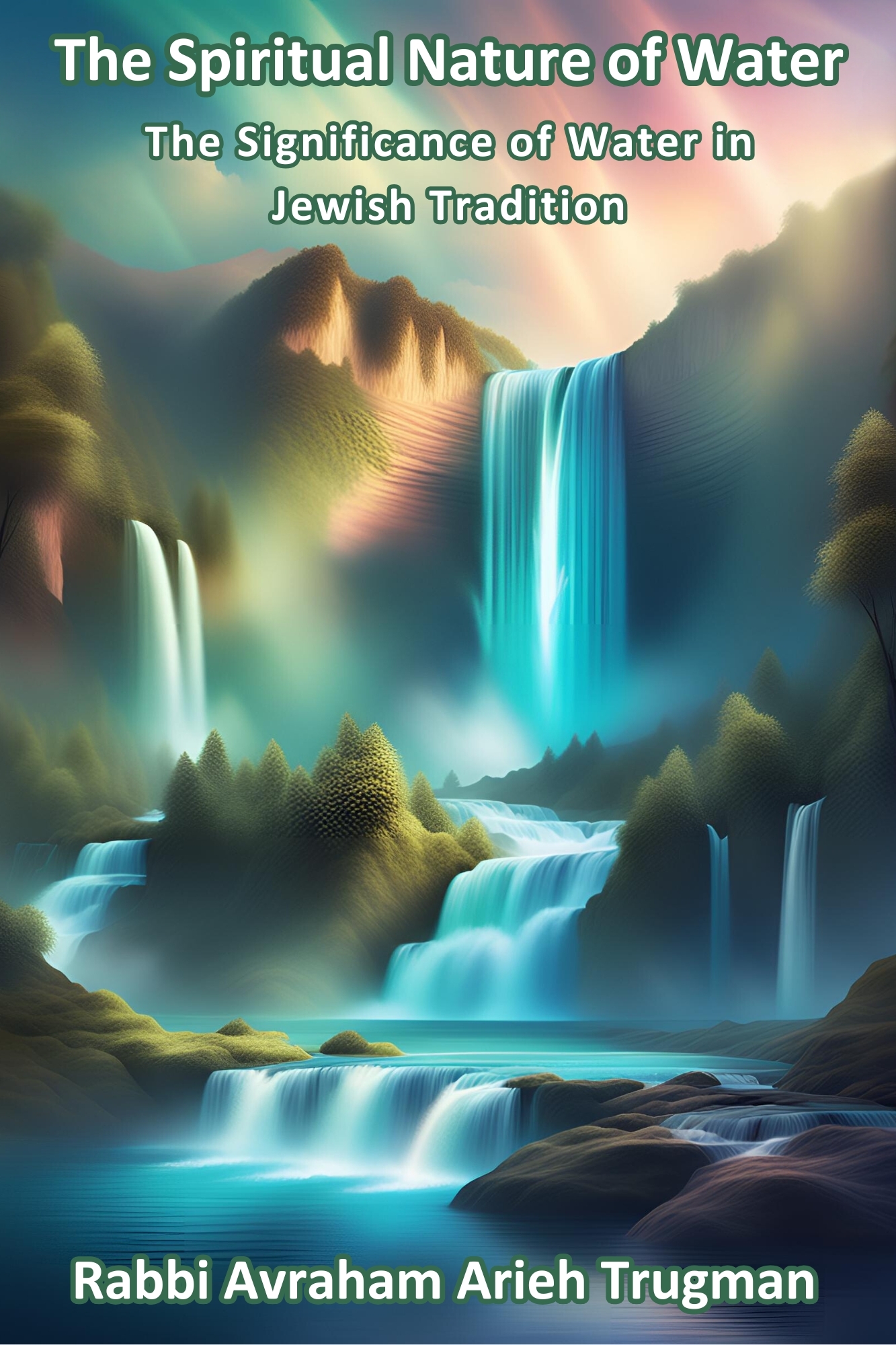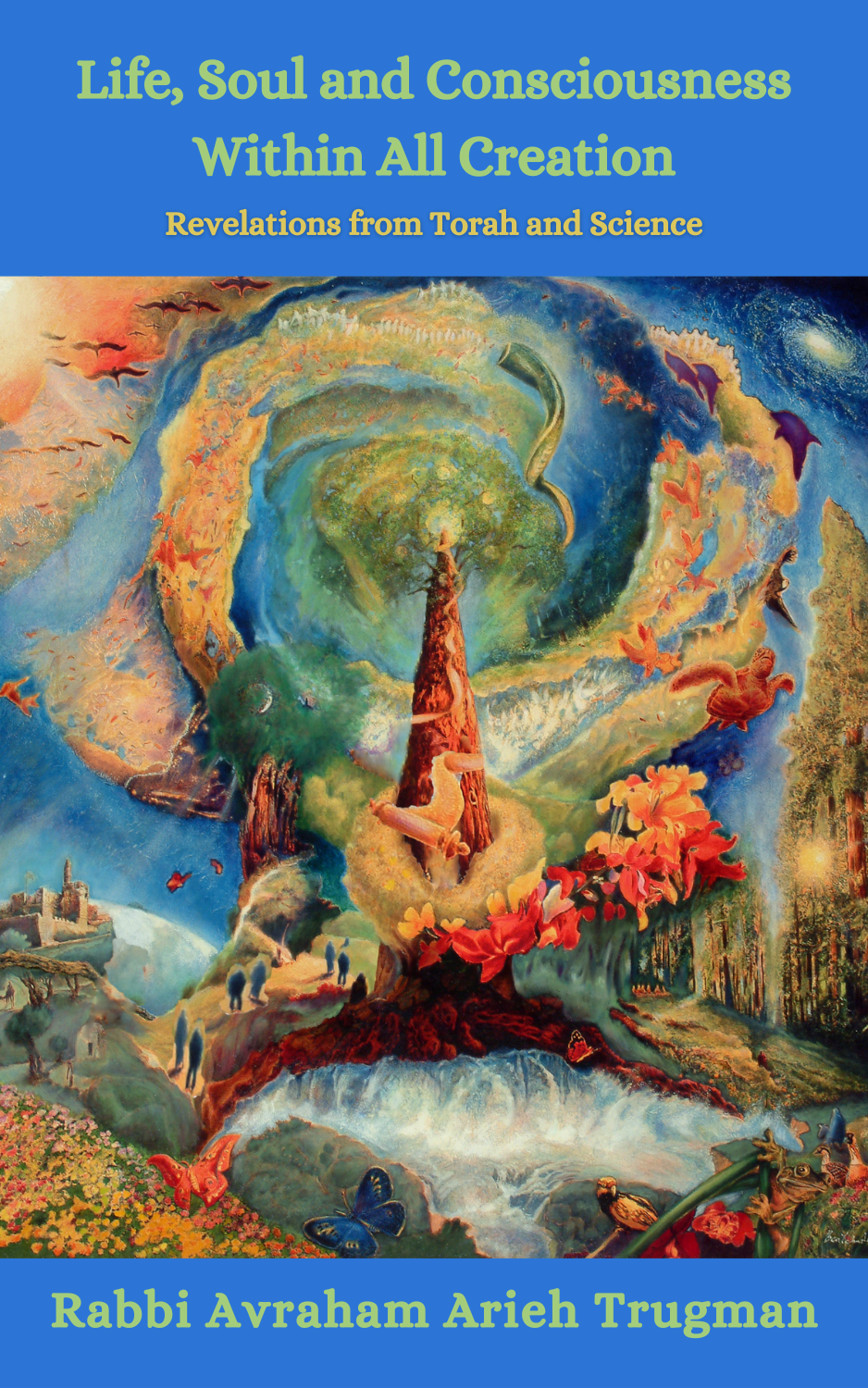The portion of Eikev remarks on the importance of rain twice. In the first, the Torah compares the lands of Egypt and Israel:
For the land that you are coming there to inherit it is not like the land of Egypt that you left there, where you would plant your seed and irrigate it with your foot like a vegetable garden. But the land that you cross over to inherit is a land of mountains and valleys; from the rain of heaven you will drink water. (Deuteronomy 11:10-11)
The land of Egypt, where rainfall is quite infrequent, was and still is totally dependent on the Nile River for its water. In ancient times, the Egyptians would irrigate their fields by forcing the Nile’s water “with their feet” into irrigation canals that would either carry the water directly to the fields or to higher places closer to the fields which could then be irrigated by hand. Even today satellite photos dramatically show the Nile’s importance to Egypt as the areas near the Nile are green with vegetation and the surrounding areas are parched and brown. The Land of Israel, which has only one large body of fresh water, is a completely different story. It was, and still remains, dependent on rainfall. Significantly, Israel’s dependence on rainfall and God’s promise that rain would fall from the heavens appear immediately before the verse quoted in the previous section that stresses how God constantly keeps his eyes on the Land.
The second mention of rain in the portion comes shortly after these verses and is in the section commonly known as the second paragraph of Shema. This paragraph is recited twice daily during prayers:
It will be that if you hearken to My commandments that I command you today, to love God, your God, and to serve Him with all your heart and with all your soul, then I shall provide rain for your land in its proper time, the early and the late rains, that you may gather in your grain, your wine, and your oil. I shall provide grass in your field for your cattle and you will eat and you will be satisfied. Beware for yourselves, lest your heart be seduced and you turn astray and serve other gods and prostrate yourselves to them. Then the wrath of God will blaze against you; He will restrain the heaven so there will be no rain, and the ground will not yield its produce; and you will be swiftly banished from the goodly land that God gives you. You shall place these words of Mine upon your heart and upon your soul; you shall bind them for a sign upon your arm and let them be an ornament between your eyes. You shall teach them to your children to discuss them, while you sit in your home, while you walk on the way, when you lay down and when you rise up. And you shall write them on the doorposts of your house and upon your gates. In order to prolong your days and the days of your children upon the land that God has sworn to your forefathers to give them, like the days of the heaven over the earth. (Deuteronomy 11:13-21)
In both passages, the implication is the same: rainfall is not a random event but a blessing that comes directly from God. The section in the Shema even adds a further caveat – not only does God control the fall of rain, but our continued stay in the Promised Land depends on whether we fulfill His mitzvot. Rain thus becomes God’s instrument of blessing or curse.
Given this connection between rainfall and our actions, the Sages instituted a series of communal fast days to be performed if rain did not begin to fall by a certain date in the rainy season. If the rain still failed to fall, the fasts and public prayers became more frequent and intense. The tractate of Ta’anit deals extensively with this subject.
There is an important Rashi on the following verse describing the creation of the world that provides a precedent for assuming that rainfall is the result of human prayer: “And no plant of the field was yet on the earth, and no herb of the field had yet sprouted, for God, God, had not sent rain upon the earth and there was no man to work the soil” (Genesis 2:5) Rashi explains that rain had not yet fallen because there was no one to work the earth. He continues by explaining that until man was created there had been no one to appreciate the benefits of rain. When man was created and realized that rainfall was a matter of life and death, he prayed for it to fall; consequently, the rain fell and the trees and plants sprouted.
Rashi’s commentary stresses how great a blessing rain is and how conscious humanity must be of this. The paragraph in the Shema though goes one step further by linking rainfall in the Land of Israel not only to an individual Jew’s prayers but to his or her actions as well. God gave the Land of Israel to the Jewish people, but it must continually earn the right to remain in the Land by keeping the Torah.
There is a beautiful story told about the Ba’al Shem Tov that sheds light on an additional dimension to the importance of rain, but before recounting it a short explanation is necessary. The High Holiday season, spanning the three weeks encompassing Rosh Hashanah, the Ten Days of Repentance, Yom Kippur and Sukkot culminates with the holiday of Shemini Atzeret. If one also includes the previous month of Elul, which was dedicated to prayer and repentance, Shemini Atzeret is the climax of nearly two months of lengthy prayer and intense introspection. On this holiday, we stop reciting the prayer acknowledging and praising God for causing the dew to fall and begin reciting the phrase “Who makes the wind to blow and the rain to fall.” This marks the seasonal change from the dry summer season to the rainy winter season. The Hebrew word for “wind” (ruach) possesses the same Hebrew root as the Hebrew word for spirituality (ruchniyut), while the Hebrew word for rain (geshem) has the same Hebrew root as the Hebrew word for physicality and materialism (gashmiyut); therefore, there seems to be a strong connection between wind and spirituality and between rain and physicality.
When the moment arrived during the synagogue service on Shemini Atzeret to make this transition from dew to rain, the Ba’al Shem Tov would first make a motion with the back of his hand as if pushing something away and utter the phrase “makes the wind to blow.” Then he would bring his hand high above his head and make a motion as if forcefully drawing something down and utter the phrase “and the rain to fall.” People thought he was indicating with these motions his readiness for God to make the wind blow and the rain to fall. He explained though that he was sending the following message: we have spent enough time on praying and spirituality (thus the hand motion of pushing away); the time has now come to bring all of these prayers, hopes, and dreams onto the stage of physical reality (thus the hand motion of forcefully drawing down).
The Ba’al Shem Tov was teaching a very important message: physicality is not the opposite of spirituality; rather, it is the stage or state in which spirituality can be truly integrated into our lives in a real and tangible way. For this reason the Ba’al Shem Tov taught his closest followers, many who became Rebbes in their own right, to be concerned not only with the spiritual health of their communities but with their adherents livelihood, health, and overall living conditions. One of the Chassidic Rebbes taught that another person’s physical concerns should be your spiritual concern.
These Chassidic teachings are not suggesting that people take materialism to the extreme, transforming it into their main focus in life; rather, they are suggesting that peoples’ basic physical needs must be taken care of, so that they are not overly burdened by what they lack, as this will have an extremely detrimental effect on their spiritual lives. For this reason the Sages taught that “If there is no flour – there is no Torah” (Pirkei Avot 3:21). The late Lubavitcher Rebbe, Menachem Mendel Schneerson, would end his personal letters with a blessing for both material well-being and spiritual attainment.
Water’s connection to physicality in the form of rain is balanced by many biblical and rabbinic references to water as symbolizing Torah itself, for instance, “There is no water other than Torah” (Bava Kamma 17a). Indeed, Jewish tradition states that whenever water is mentioned in the Torah, it is an allusion to Torah itself. Just as human beings and plants cannot survive without water, so too the Jewish people cannot survive without Torah. This correspondence hints on a deeper level to why rainfall in the Land of Israel is ultimately dependent on the fulfillment of Torah. Rain (and all it symbolizes) provides the tools for both physical and spiritual survival; ultimately, though, “rain” will only fall if the Jewish people first draw down upon themselves the spiritual blessings of the Torah by fulfilling the mitzvot. This will make them worthy of receiving the physical blessings of rain, which in turn will allow them the freedom to further devote themselves to their spiritual efforts.
The prophet Zechariah teaches that in the future a river will flow out of the rebuilt Temple and sweeten all the waters in the world (Zechariah 14:8). At that time physicality will become a perfect vessel for spirituality. Life-giving waters of material well-being and spiritual ascent will flow to the entire world from the Holy Land which will be transformed into an Orchard of Delights as the Rambam writes: “In the Messianic era there will be neither war nor famine. Jealousy and competition will cease to exist, for all good things will be most plentiful and all sorts of delicacies will be as plentiful as dust” (Mishneh Torah, Hilchot Melachim 12:5).







